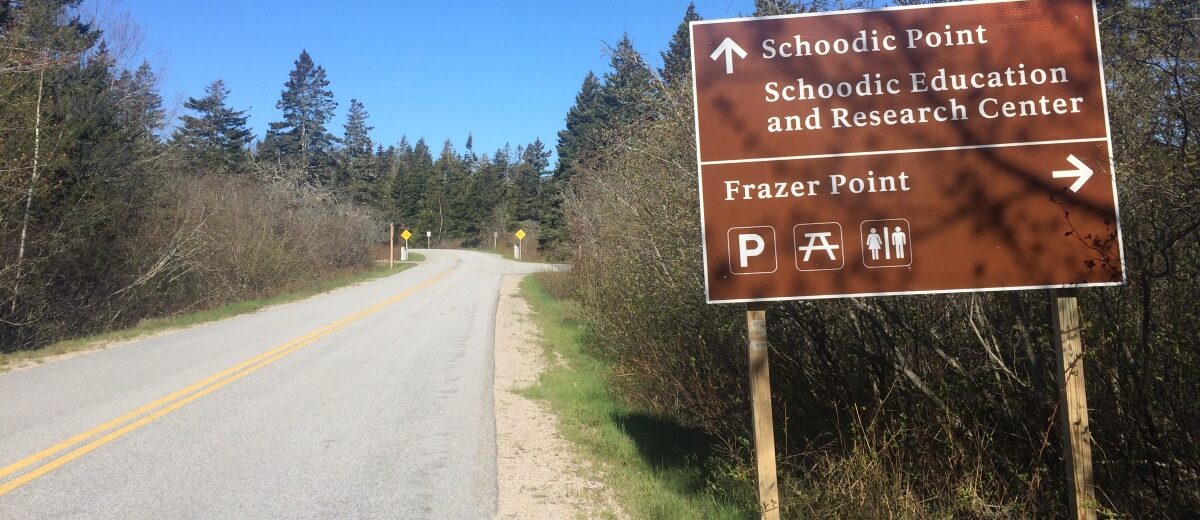by Nick Fisichelli
When I come into the office (not as often these days due to coronavirus restrictions), I sometimes stop at the Frazer Point Picnic Area. There are so many stories here, this small point of land where Frazer Creek drains into Frenchman Bay, and the warblers and apple blossoms herald the arrival of spring.
An eroding shell midden reveals that the ancestors of the Wabanaki people lived here thousands of years ago. Maps and deeds show that British colonists occupied, divided, and sold this land hundreds of years ago. Census records document that Thomas Frazer, a free Black man, Mary Frazer, and their seven children lived here in the late 1700s and early 1800s.[1] They made salt, processed fish and timber, and tended cows, pigs, sheep, and chickens.
For several decades after the Revolutionary War, the Frazer family lived here, at the edge of the continent. It could not have been easy for them, amid a rapidly changing economic, environmental, and social landscape. Yet we have no details of their struggles and successes, no historical records of what became of them. We could have learned so much more.
The forces behind many of the environmental changes we study at Schoodic Institute are the same forces that affected the Frazer family, and continue to create and uphold racism today. We support efforts to expose, protest, and dismantle racism, and we recognize that our mission to engage people in the science and solutions must be intentionally and explicitly inclusive. Finding solutions means listening to and learning from one another’s knowledge and expertise, from how to respond to climate change to how people experience and benefit from parks and other public spaces. We must continue and strengthen our partnerships with the National Park Service, Earthwatch Institute, the Citizen Science Association, Friends of Acadia, and others that are engaging a diversity of people here in Maine, across the country, and around the world.
As scientists working in close partnership with the National Park Service, we also must confront the racist legacies of both parks and science. As communicators, we must pay attention to how racism is revealed in the language of science and be deliberate about the stories we choose to tell of park science, and who tells them. As educators who create and promote opportunities for lifelong learning, we must believe there is always a chance to rediscover and grow.
At Frazer Point, archaeologists have uncovered and examined objects that hint at daily life of the Frazer family: broken bowls, hand-forged nails, a pewter spoon, an 1802 penny. These are but fragments of their story. The artifacts of our current existence include much violence and pain. We must be willing to look at the evidence of today’s systemic racism, listen to other voices, and take action. We need each other to secure a just and peaceful world.
~~~
[1] An earlier version of this message incorrectly identified Mary Frazer as Wabanaki. While some sources describe her as being Native American, we have no documentary evidence to confirm her background. Similarly, Thomas Frazer is listed in census records as “mulatto.” We assume he was a Black American, but the term was also used to describe any person of color with mixed heritage. The National Park Service continues to research Thomas Frazer and the history of Frazer Point.
